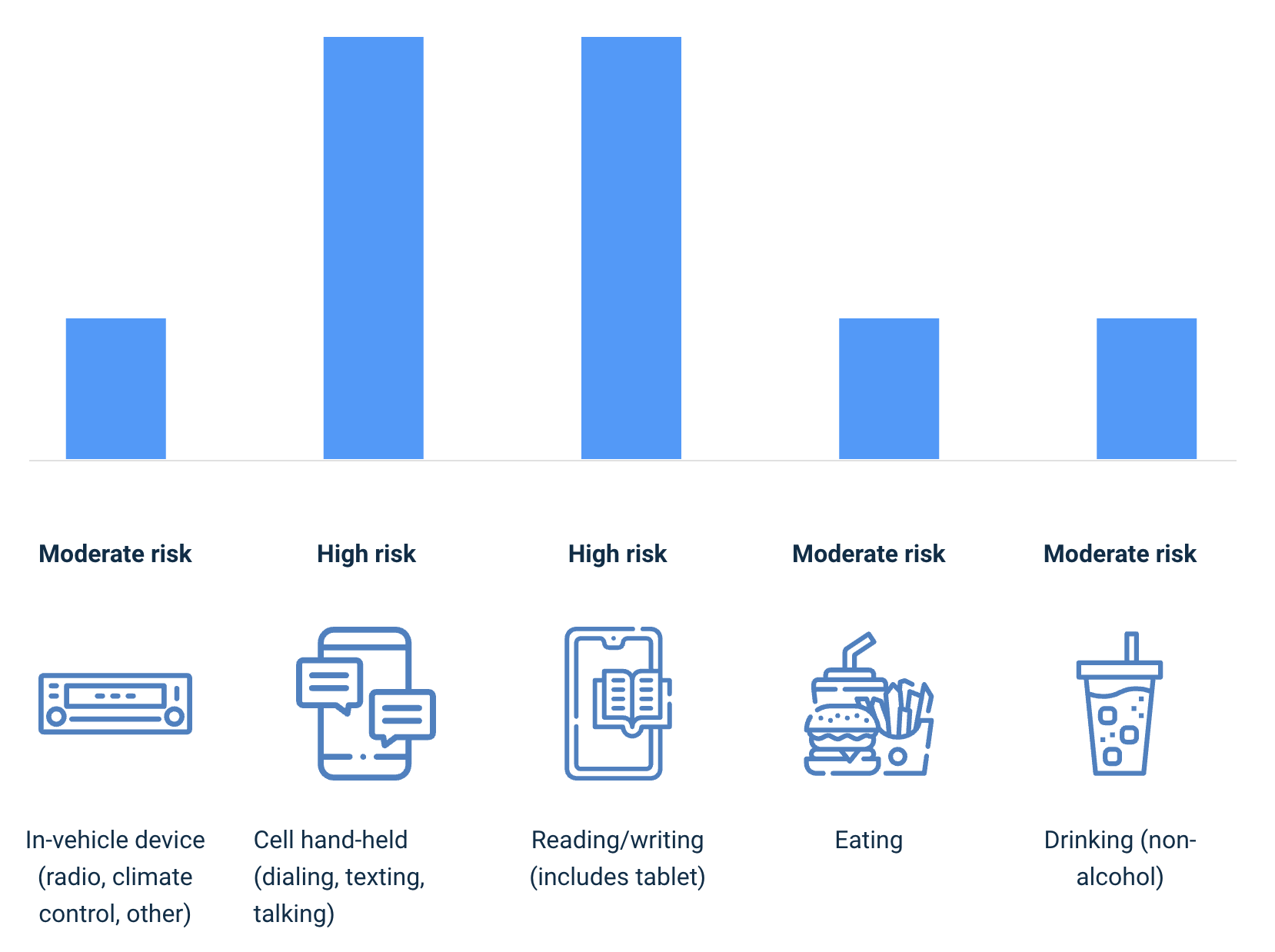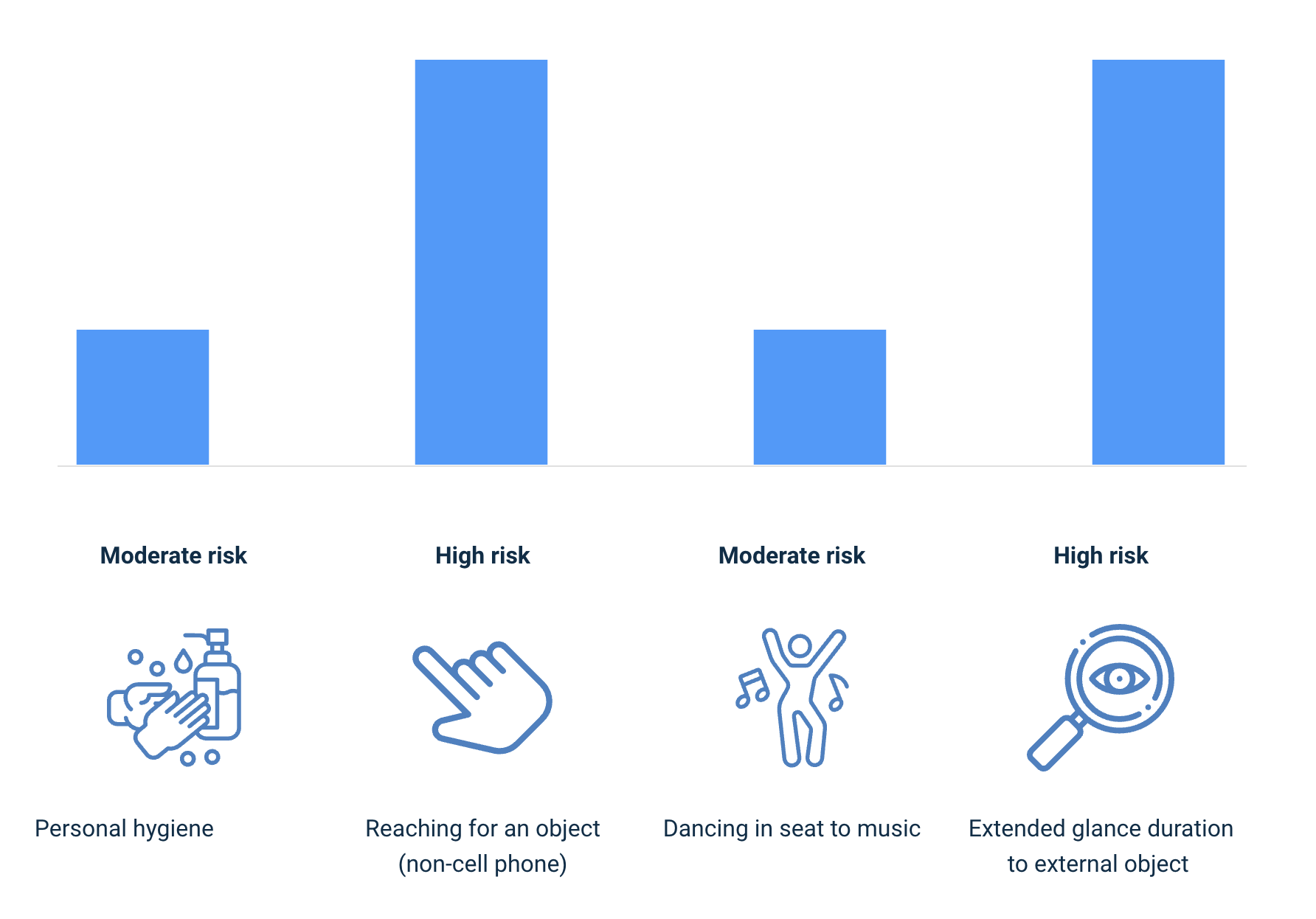STEP 3
Tool 3B
Policy Education Outline & Teaching Plan

Agenda
Write on flipchart or white board prior to training
Engaged Driving Policy Launch Day
Date:
TODAY’S TOPICS:
- Welcome & Introductions
- Understanding Distracted Driving
- Policy Overview
- Tools for Success
Instructor Guide
Supplies:
– Flip chart or white board & markers
– Pens
– Index cards (Think – Pair – Share activity)
– Timer
– Policy Copies
Handouts:
1. New workplace distracted driving policy
2. DOWNLOAD “ACTION” Activity Part 1: Distracted Driving Policy Impact in the Workplace worksheet
3. DOWNLOAD “ACTION” Activity Part 2: Tools for Reducing Distracted Driving
"Anchor" Activity: Think, Pair, Share instructions
Note to Instructor: Throughout the workshop you will see “ANCHOR” and “ACTION” activities. These are designed to anchor understanding of the new policy and encourage participants to practice skills to support adoption and compliance with the new policy.
Workshop Outline
Topic and Purpose / Time
Instructor Notes
Set-Up
(before the session)
Before session:
- Write agenda on flip chart or white board
- Set up computer and projector to present PowerPoint slides
- Have copies of policy and handouts
Welcome & Introductions
10 min
Introduce self and any policy team members present
Set the stage:
Why are we addressing distracted driving?
“ANCHOR” ACTIVITY (See activity instructions page)
Think – Pair – Share
- Clarifying what distracted driving is and how many distracting behaviors increase risk of a crash
Slide 1: Welcome!
Thank everyone for participating in the survey. Conduct group introductions if appropriate.
Slide 2: Why are we addressing distracted driving at work? We need your support to shift toward a culture of safe, responsible driving at work and throughout our communities. Complying with existing laws and regulations is essential, but our goal is to achieve higher levels of safety by going beyond compliance to commitment – a commitment to safety for yourself and for others.
Slide 3: Distracted driving is…
Slide 4: Definition of Distracted Driving
Introduce the New Policy
20 min
Share & Discuss the Policy:
- Participants read & become familiar with the new (revised) workplace policy.
- Highlight that the policy has 3 important priorities.
“ACTION” Activity:
Distracted Driving Policy Impact in the Workplace
Consider Policy Impacts
- How will the policy impact YOU?
- Your DEPARTMENT or DIVISION?
- Our WORKPLACE?
- Our COMMUNITY?
HANDOUT: Hand out a copy of the workplace policy with each person.
Slide 5:
The 3 priorities include:
- Drivers never drive distracted—to protect self, passengers, and bystanders.
- Speak up if you are with a driver who is distracted.
- Employees should encourage coworkers, friends, and family to drive distraction-free.
Be prepared to share information on:
- Implementation timeline (When does it or did it go in effect?)
- Enforcement (Who will be enforcing the policy? What will be involved? Are there sanctions for noncompliance?)
- Feedback (How would managers or leaders like to receive feedback on the policy once it is in place?)
- Manager/Supervisor commitment to not expect calls to be answered when someone is driving or assign employees to participate on handsfree conference calls while they are driving.
HANDOUT: Hand out a copy of Distracted Driving Policy Impact in the Workplace worksheet
Slide 6: Graphic of Workplace Impacts (Corresponding with worksheet)
See image added to slide deck.
Allow 15 minutes to complete the Distracted Driving Policy Impact in the Workplace worksheet.
Growing a Culture of Safety
20 min
- To grow a culture of safety, everyone is involved in promoting a safe, responsible culture in the workplace.
- Growing this culture means encouraging everyone to speak up and get involved in a situation when intervention is needed.
Non-drivers who speak up about distracted driving should demonstrate:
- CARE–Be clear that the other person’s safety is important to you.
- CALM–Don’t become angry or agitated. Be clear and assertive, but not aggressive.
- CONFIDENCE–Speak directly with knowledge of the policy and what constitutes correct safer behavior.
“APPLY” ACTIVITY: What I See, What I Say
• Offer an opportunity to practice the “bystander engagement” portion of the policy
Slide 7: Growing a Culture of Safety
Slide 8: Non-Drivers Who Intervene Demonstrate Care, Calm, and Confidence.
Slides 9-12: “What I See” scenarios
Allow 15 minutes for “ACTION” Activity: What I see, What I Say
Slide 13: We ALL need to speak up if we know someone is driving distracted or peer, boss is asking to return call, email, virtual meeting. Regardless of role, rank, or position, everyone in the organization should feel comfortable speaking up about distracted driving.
AWAY:
5 min
“ACTION” ACTIVITY: Tools and Ideas for Reducing Distracted Driving
Tools for Success
Wrap-Up
- Leave with practical tools for reducing distracted driving.
Slide 14: List of Tools and Ideas for Reducing Distracted Driving
ASK: Any suggestions or additions to the list?
Slide 15: DISCUSS: How can they share this information with their friends and families?
Share these tools with friends and family to encourage focused driving throughout our community.
Slide 16: Ask for commitment, handout tools reference
Slide 17: Thank you!
“ANCHOR” Activity: Think-Pair-Share
Items needed:
Index card and pen or pencil for each participant
Timer
INSTRUCTIONS
1. Hand out index card and pen/pencil to each participant.
2. Ask each participant to write, in their own words, the ending of this sentence: “Distracted driving is…” Give participants 1 or 2 minutes – very short.
3. After 1 or 2 minutes, ask them to finish writing and pair up with a partner sitting nearby.
4. In pairs, have each individual share what they wrote and discuss the similarities and differences with a partner. Start timer for 2 minutes.
5. After 2 minutes, share distracted driving definition with the whole group.
6. Then, ask for some examples of distracted driving behaviors. Compare them to this list:
- Talking on a cell phone – hands free or holding a cell phone
- Texting or using a messaging app
- Browsing websites, answering email, or viewing social media sites or photos
- Eating or drinking
- Grooming (brushing teeth, applying make-up, etc.)
- Tending to a child or pet
- Using a navigation system
- Adjusting a radio or other device
- Even talking to passengers
7. Share the following information from a study of hundreds of drivers using cameras mounted in the vehicle. The study was able to capture what was happening just before crashes occurred. The study was able to determine the level of risk for being in a crash based on different distracting behaviors.
Major distraction subcategories (observed in crash events)
Click on the graphs to enlarge them.
8.Discuss: How were your ideas about distracted driving similar and different from this list? Cell phones are just one source of distraction. What is common about all these behaviors?
Expected answers: Involves attention + physical action (hand(s) off wheel).
“APPLY” ACTIVITY: What I See, What I Say
INSTRUCTIONS
1.SAY: I will be sharing four descriptions of various scenarios on the screen. These are all scenarios that could occur in our workplace, and you will each have an opportunity to practice how to respond with care, calm, and confidence. Each person in the group will have an opportunity to respond to one of the scenarios as the “intervening” co-worker, while another member of the group receives the intervention and responds. The other group members observe.
2. Designate one person to go first by determining the person in each group who has a birthday closest to the current date. They will be role-playing the scenario as the person intervening, with the person to their left receiving the intervention and responding.
3. Display the first scenario on the screen. (Slide 9)
4. Invite the first participant to read, collect their thoughts, and role-play what they would say as an intervention with the coworker to his or her left.
5. Then, the participant receiving the intervention responds accordingly. Pay attention to how it feels and what you think as the intervener and as the co-worker distracted.
6. After the role-play has occurred for the first scenario, pause briefly until all groups are finished. Discussion will not occur after each scenario, but instead after all four scenarios have been presented.
7. Repeat with the remaining scenarios, (Slides 10-12) rotating participants each time. Take turns so each person has a turn to be the “intervening” co-worker, and each person has a turn to be the co-worker receiving the intervention and responding. Depending on group size, some participants may have more than one turn.
8. When all four scenarios have been completed and each person has taken a turn, ask them about their experiences.
9. Debrief Prompts:
- Were any of these scenarios similar to situations you have experienced in real life?
- What did you think about being the person intervening in these situations?
- Was there anything that made intervening difficult for you?
- What did you think about being the person receiving an intervention?
- For what you might think, when you find yourself in a similar situation in real life?
10. Then, go through each of the four scenario slides again. Display each scenario on the screen and ask for a volunteer to share what some of the responses were in their group. Discuss some of the best ways and specific challenges they found for each.
11. Thank the participants for their involvement and ask them to return to their original seats



